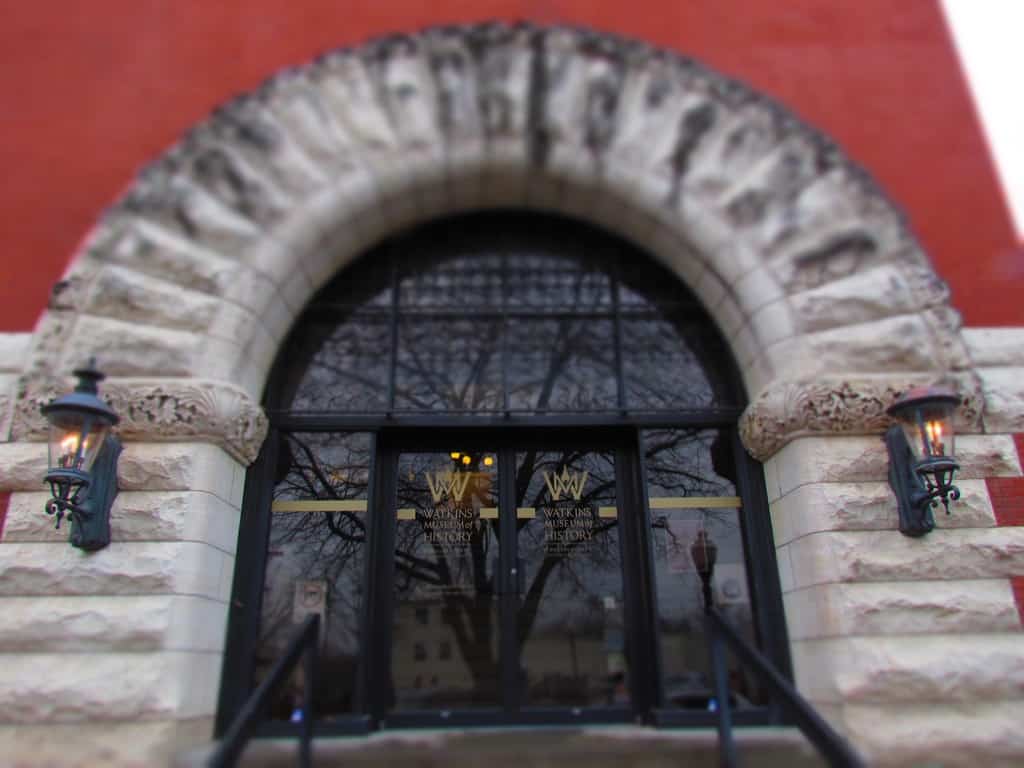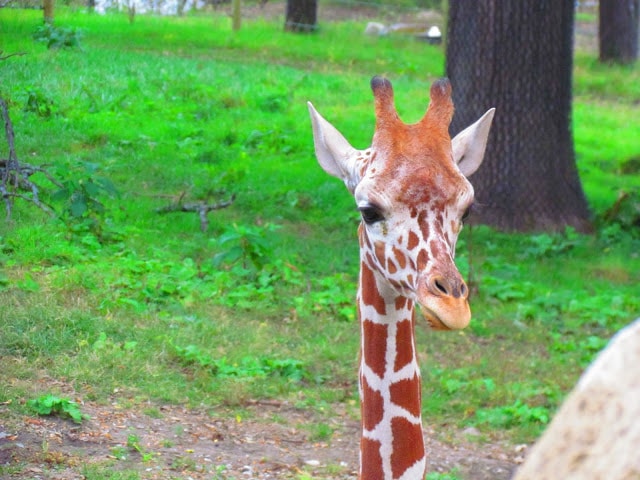We find that the local history museums offer a great chance to get a better cultural experience in the cities we visit. In Lawrence, Kansas we made a stop at the Watkins Museum of History. Housed in the 1888 Watkins Land Mortgage and National Bank Building, this regional museum offers a view into the lives of past members of the Lawrence community. The museum is open year round, and free to the public.

Hometown Heritage
We arrived on a Saturday afternoon, and were greeted by a staff member who explained the layout of the three floors of exhibits. Heading up one flight of stairs brought us into the main floor of displays. The first thing we found was a series of freestanding placards showcasing the people and groups that have helped shape the city. Lawrence was home to a host of emigrants from New England, many of whom brought their abolitionist ideals in tow. The area was a Shawnee Indian Reservation, but was opened to settlement in 1854. The country was on the edge of Civil War, and Kansas would prove to be at the heart of the conflict.

The Beginning of a Town
The city was founded by settlers from the east coast, but would soon see many new people flood into the area from all over the region. Some were in the abolition party, but quite a few were pro-slavery. This combination, along with the impending desire for statehood would lead to a series of conflicts. During late 1855, and early 1856, Missouri militia members would enter Lawrence for the purpose of slowing the spread of free-state politics. In May 1856, Douglas County Sheriff Samuel Jones entered the town with southern settlers to disarm the citizens and sack the town. Free state newspapers had their printing presses destroyed, as well.

Notorious Visitor
As the Civil War neared, the skirmishes between pro-slavery and abolition sides grew. Forays into the countryside would reek damage on the innocent settlers on many accounts. The war of “Bloody Kansas” continued to escalate, and included one of the most well known events in the war. On August 21, 1863, William Quantrill led a group of Confederate guerrillas on a mission to destroy Lawrence. Many historians believe this was done in retaliation for the Union attack on Osceola, Missouri in September 1861. During the four-hour raid, a quarter of the buildings were burnt to the ground. Stores and banks were looted and about 150 people were killed, including one from Quantrill’s party. (He was lynched the following day.)
Interactive History at Watkins Museum
During our visit, we discovered an interactive display that allows visitors to see the path of destruction left by Quantrill’s Raid. It includes a map of the attack, as well as personal accounts from the day.

A City’s Rebirth
After the Civil War, Lawrence was able to concentrate on the business of rebuilding their city. The University of Kansas opened in 1865, and became the second state university. Business flourished, and the population rebounded.

A series of drawers in one of the displays offers a variety of interactive exhibits. Visitors can see replicas of the money used during the late 1800’s. Another drawer holds artifacts that would be commonplace for soldiers of that period. One of my favorites is the drawer of Old-Time Smells. Here you can smell things that would have been used or experienced in everyday life in the 19th century. Be sure to see how many of these your kids can recognize.

Shopping in Style
Fast forward to the next century, and Lawrence had grown to be a popular destination for college students from around the world. The addition of the Bowersock Dam on the Kansas River allowed the city to supply power to its residents and businesses. This also gave Lawrence a better chance to compete against Kansas City and Leavenworth. The population continued to grow, and retail business boomed on Mass. Street.

Transformation to the Watkins Museum
In 1888, the Watkins National Bank opened at 11th ad Mass. Street. The bank lasted until 1929, when it was donated to the city for a city hall. In 1970, a new city hall was built, and the Watkins building was repurposed to its current sate as the local historical museum. Throughout the building we found many ties between current and past. A victorian designed playhouse reminds us of many of the homes scattered through the city’s neighborhoods. The Watkins Community Museum does a good job of not just showing the city’s past, but tying it to the present. So when will you visit the Watkins Museum?






Thanksa lot for the post. Want more.
Glad you enjoyed it.
By Jeff & Crystal, thank you for this post. Its very inspiring.
We appreciate the feedback.
By Jeff & Crystal, thanks so much for the post.Much thanks again. Really Cool.
Glad you enjoyed it.
Thank you ever so for you post.Much thanks again.
You are quite welcome. We are glad you enjoyed it.
First time to your posts. Jayhawk history ftom the Watkins museum was very imformative. Thank you both.
We are glad you enjoyed it. We hope you come back often.
Mister Skaggs the Quantrill member was not hung the day after the raid. he was killed the day of the raid. He was drunk and did not leave with the main body. He was trapped and killed and his body was hung after he was killed.
Thanks for clarifying.